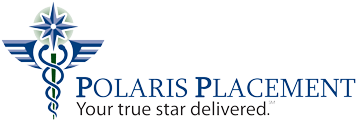Since the onset of the Covid-19 pandemic, healthcare staffing shortages – an issue that’s plagued the industry for years – have only intensified. Even as the number of coronavirus cases continues to plummet nationwide, hospitals and healthcare facilities are grappling with a bevy of obstacles as a result of being short-staffed.
According to a recent survey conducted by the Washington Post and Kaiser Family Foundation, 3 in 10 healthcare workers admitted they’re considering leaving the profession, while 6 in 10 stated the pandemic has caused significant burnout. This is a flashing red alert sign that needs to be taken seriously!
Gaps in Healthcare Employment Exacerbated by the Pandemic
While vaccination availability and federal funding has offered some relief for hospitals and healthcare facilities, they’re still shouldering the burden of a tight labor market.
Alarming data released by the U.S. Department of Health and Human Services on April 10 revealed 657 hospitals across the country were facing critical staffing shortages just on that single day alone. Additionally, 13.9% of hospitals said they expect grave shortages within the coming week.
Nursing shortages present some of the largest gaps impacting the industry today. The American Nurses Association (ANA) anticipates a need for nearly 3.44 million nurses by 2022, including a 20.2% increase in RNs. As the ANA continues to monitor the very real and harrowing dilemma of the growing nursing shortage, they also predict vacancies to surge by over half a million by 2026.
For nurses and other healthcare workers, long-standing issues like inadequate staffing, long hours and even low wages in parts of the country, were heightened by the pandemic, yet not addressed. Exhausted and overworked, scores of healthcare workers are considering a career change. Further amplifying the problem is the increasing number of both physicians and nurses approaching retirement age.
In the 2020 National Healthcare Retention & RN Staffing Report, researchers discovered that the cost of turnover for single bedside RN is costing healthcare organizations an estimated $44,400 per nurse. Annually, that amounts to approximately $3.6 million to $6.1 million in yearly revenue loss.
Inadequately staffed hospitals and facilities are attempting to bridge gaps by adding extra administrative and clinical tasks to their workers’ already overburdened plates – which is only further amplifying burnout. Insufficient staffing coupled with the inability to maintain one’s health and wellbeing is causing turnover rates to skyrocket.
Mitigating Healthcare Employment Shortages Moving Forward
Not only is employee burnout, turnover and gaps in coverage affecting the quality of care delivered to patients, but it’s negatively impacting the bottom line for healthcare organizations. Insufficient staffing will only serve to perpetuate issues like inefficiencies in workflow, poor patient experiences and shrinking hospital margins.
Growing healthcare employment gaps are causing healthcare organizations to reevaluate their strategy, budget allocation and approach to staffing their facilities. By partnering with a healthcare recruitment agency like Polaris, you can effectively reduce burnout, improve patient outcomes and minimize revenue loss.
How? It all boils down to having a pipeline of qualified healthcare workers readily available to bridge staffing gaps or unanticipated upswings in patient flow. To learn more about our healthcare staffing solutions, contact us today.

